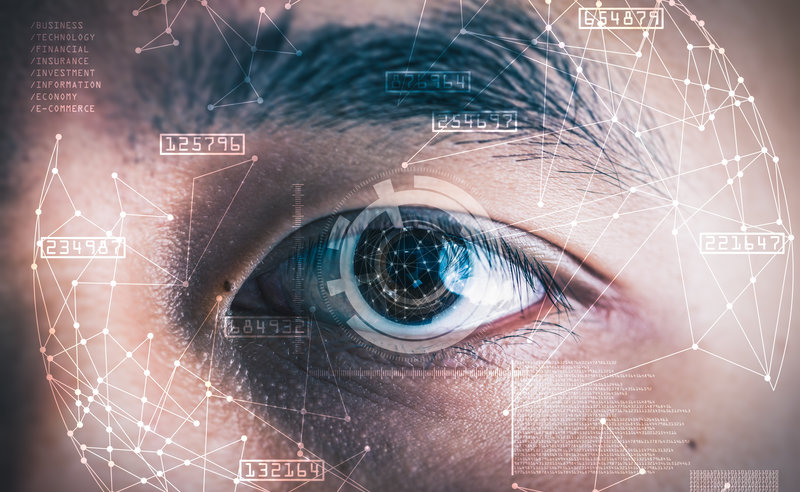José del R. Millán: In einem Brain-Computer-Interface (BCI) werden neuronale Signale des Gehirns durch einen Algorithmus dekodiert und in konkrete Leistungen übersetzt. So können Menschen mit körperlichen Behinderungen zum Beispiel Computeranwendungen oder Exoskelette steuern. Das Feedback des Gerätes, das dem Benutzer entweder über normale sensorische Wege oder direkt durch Hirnstimulation übermittelt wird, bildet einen geschlossenen Kontrollkreislauf. Durch die BCI-Technologie können die menschlichen Fähigkeiten auf natürlichem Weg erweitert werden, weil sie eine neue Art der Interaktion mit der Aussenwelt ermöglichen. In diesem Zusammenhang ist sie ein besonders wichtiges Hilfsmittel für Patienten mit schweren neuromuskulären Behinderungen.
BCIs sind heute bereits relativ weit entwickelt. Darauf aufbauend können nun neue Interaktionsmodalitäten für Menschen mit Behinderung entwickelt werden. Die Idee dahinter ist aber nicht, normale motorische oder sensorische Fähigkeiten zu erweitern (z.B. die Kontrolle eines dritten Armes oder Infrarot-Sehen). Vielmehr geht es darum, das Interaktionserlebnis des Nutzers zu verbessern. Das heisst, das Aktionen, die er ausführen (oder nicht ausführen) wird, durch den Computer vorausgesehen werden können. Ausserdem sollte der kognitive Zustand des Anwenders dekodierbar werden. Das ermöglicht dem Gerät, seinen Nutzer bestmöglich zu unterstützen, die Interaktionen mit diesem zu verbessern und zu personalisieren. So könnten in Zukunft BCIs auch anders eingesetzt werden, zum Beispiel zur Verbesserung des Fahrerlebnis im Auto.
Es liegt auf der Hand, dass das Leistungsniveau eines BCI für den Einsatz im Massenmarkt erhöht werden muss. Dies hat jedoch nicht die oberste Priorität. Für die meisten BCI-Anwender wird das aktuelle Leistungsniveau ausreichen. Die grössten drei Hindernisse sind für mich folgende: Erstens kann ein BCI die Absichten der Nutzer angesichts der sehr variablen Hirnsignale nicht immer adäquat dekodieren. Wir müssen Wege finden, diese Schwankungen in der Leistung zu verringern. Zweitens muss die Einrichtung eines BCI vereinfacht werden, so dass für die Benutzung nur ein minimales Mass an Fachwissen erforderlich ist. Drittens sind die derzeitigen Systeme zur Aufzeichnung des Gehirns zu auffällig und müssen weniger sichtbar werden.
Das wird schwierig werden: Gehirnsignale (elektrische, chemische oder andere Signale) sind sehr klein und Aufzeichnungsgeräte müssen eine hohe Empfindlichkeit aufweisen, um sie von anderen Signalen inner- und ausserhalb unseres Körpers zu unterscheiden und sie in ausreichender Qualität (Signal-Rausch-Verhältnis) aufzuzeichnen.
Die Benutzer müssen lernen, spezifische Hirnmuster zu erzeugen, um ihr BCI zu bedienen. Das bedeutet, dass man Gehirnprozesse stören könnte, die zu diesen spezifischen Mustern führen. Dadurch könnte die BCI-Nutzung behindert werden. Solche Störungen hervorzurufen ist relativ einfach. Im Prinzip ist es so, als ob man bei einer manuell auszuführenden Aufgabe behindert wird. Hypothetisch gesehen könnten wir ein stärkeres Mass an Manipulation induzieren, indem wir extern im Gehirn der BCI-Nutzer die gleichen Muster erzeugen, wie sie sie zum Betreiben ihres BCI hervorrufen, und sie so glauben lassen, dass sie sich freiwillig an der Interaktion beteiligen.
José del R. Millán ist «Defitech»-Professor und Leiter des Labors für Hirn-Maschinen-Interfaces an der EPFL. Er ist Redner am 15. Europäischen Trendtag, der am 13. März 2019 am Gottlieb Duttweiler Institute stattfindet. Im Zentrum steht die Zukunft der Kommunikation, über die international renommierte Vordenkerinnen und Vordenker referieren und diskutieren werden.

Beyond Words: Neue Interfaces für eine neue Kommunikation